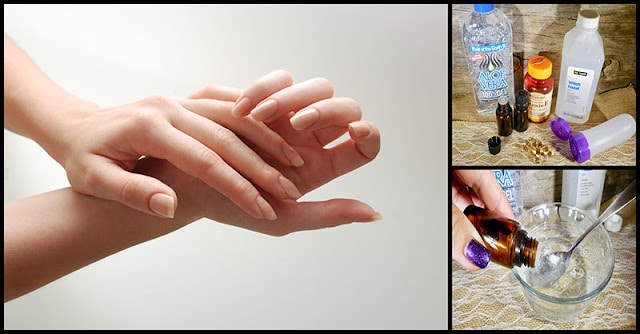Washing your hands is the key to minimize the spread of germs and prevent infections from recurring in your body.
According to Centers Disease Control and Prevention (CDC), you should wash your hands with running, clean water and soap for 20 seconds for best results. However, the CDC added that an alcohol-based hand sanitizer is the next best thing in case running water and soap are unavailable.
Unfortunately, these commercial hand sanitizers have been all the rage lately and there are plenty of reasons why you should avoid them and make your own homemade, nontoxic sanitizer.
The Toxicity Associated With Commercial Hand Sanitizers
According to the U.S. Food and Drug Administration (FDA), all antibacterial-labeled cleaning products, such as antibacterial soap and hand sanitizers, contains triclosan and triclocarban that are highly harmful to your health.
Prolonged use of antibacterial, commercial hand sanitizers has negative effects on the body.
Results of a 2006 study published in Microbial Drug Resistance have revealed that, when used regularly, the triclosan in hand sanitizers and other hand-cleansing products make skin bacteria and other microorganisms resistant to its effect. Furthermore, triclosan also poses a risk of becoming a public health concern as it can make a person immune to the effects of medicinal antimicrobials, such as those medicines that are used in treating the contagious bacteria E. coli and salmonella which have the capacity of affecting the entire communities.
Moreover, studies also found that commercial hand sanitizers may contain propylene glycol and like isopropyl myristate that enhance the skin’s absorbing-abilities, thus making the skin more prone to absorbing countless environmental contaminants.
The use of these sanitizers also makes your skin more permeable to the suspected endocrine disruptor bisphenol-A, (BPA). BPA is widely used on receipts because it helps ink adhere to the paper and makes it more visible. According to a study, those who used commercial sanitizer immediately after handling paper receipts absorbed 10 times more BPA into their bodies than those who did so with dry hands. Once absorbed into the skin, BPA remains in the blood for a longer time as this can’t be immediately processed by the liver.
Artificial fragrances are also found in commercial hand sanitizers. These fragrances have been linked to hormone disruption, respiratory problems, dermatitis, allergies, and possible side effects on the reproductive system.
Due to these, it would be better if you just make your own chemical-free hand sanitizer.
Nontoxic Homemade Hand Sanitizer Recipe
In this recipe, rubbing alcohol is the one that keeps the ingredients together and will effectively kill the germs.
An effective antibacterial agent, aloe vera gel can help moisturize your skin.
Vitamin E oil or vegetable glycerin will help counter the harshness of the rubbing alcohol.
Other effective antibacterial agents are clove, rosemary, cinnamon tea tree, and eucalyptus oils.
In a 2006 study published in BMC Complementary and Alternative Medicine, rosemary, cinnamon, and clove essential oils were found to be effective against potent bacteria.
Moreover, significant antibacterial activities against E. coli and S. aureus germs were found to be exhibited by eucalyptus essential oil, claimed by a 2012 study published in the Asian Pacific Journal of Tropical Biomedicine.
According to a 2000 study published in the Journal of Antimicrobial Chemotherapy, tea tree oil was highly effective at quickly wiping out multiple medication-resistant bacteria.
Things you’ll need:
Rubbing alcohol
Aloe vera gel
Vitamin E oil
Clove essential oil
Tea tree essential oil
Eucalyptus essential oil
Cinnamon essential oil
Rosemary essential oil
Distilled water
Funnel
Measuring cups and spoons
Medium-size spray bottle
Mixing bowl
Procedure:
Add 2 tablespoons of rubbing alcohol in 1 cup of distilled water. Add 1 tablespoon of aloe vera gel, ½ teaspoon of Vitamin E oil, 10 drops each of cinnamon oil and tea tree oil, and 5 drops each of eucalyptus, clove, and rosemary oil. Stir the ingredients together and pour the mixture into the spray bottle using a funnel. Tighten the cap and shake the contents.
Now, spray some on your palm and rub it all over your hands.









